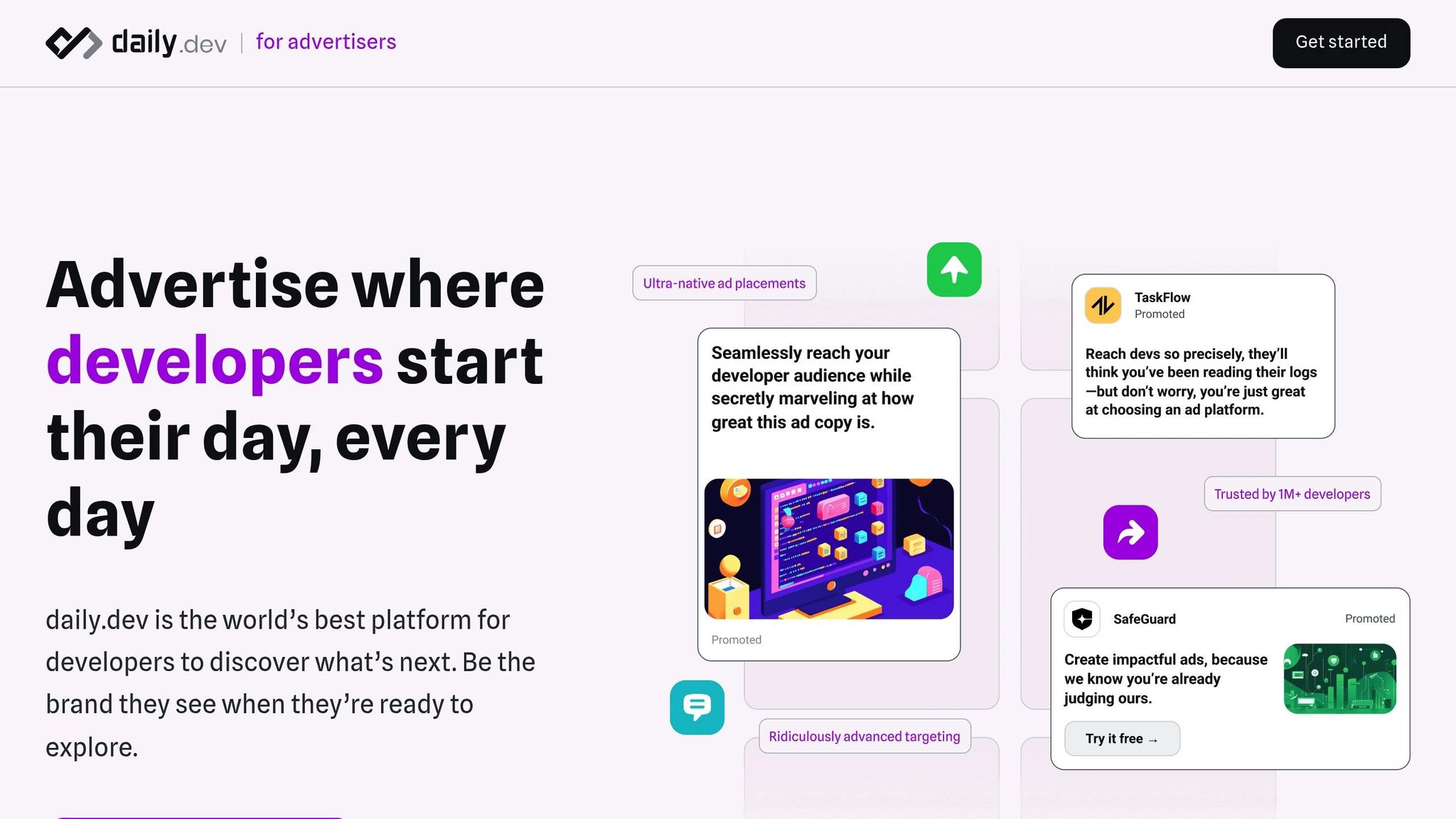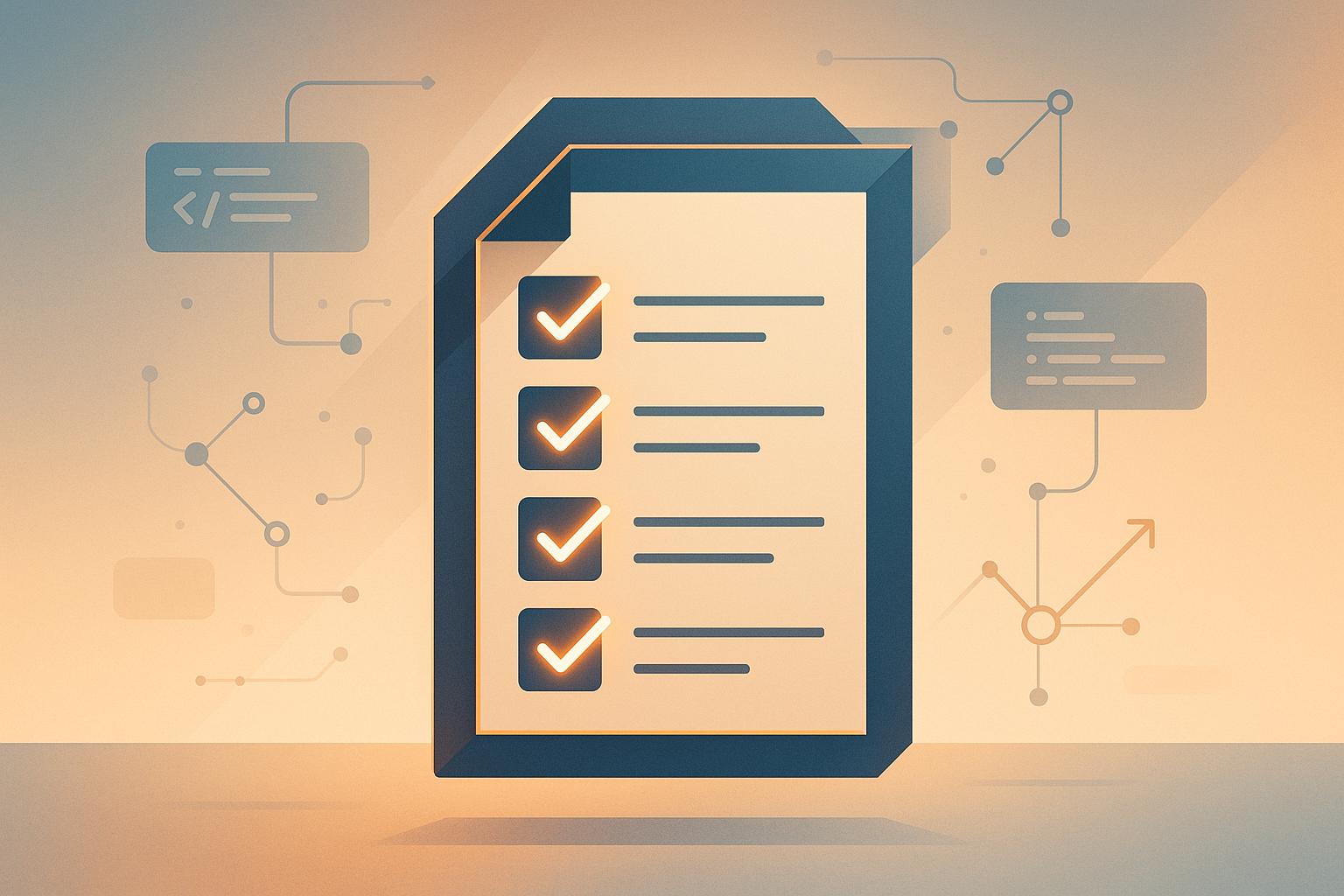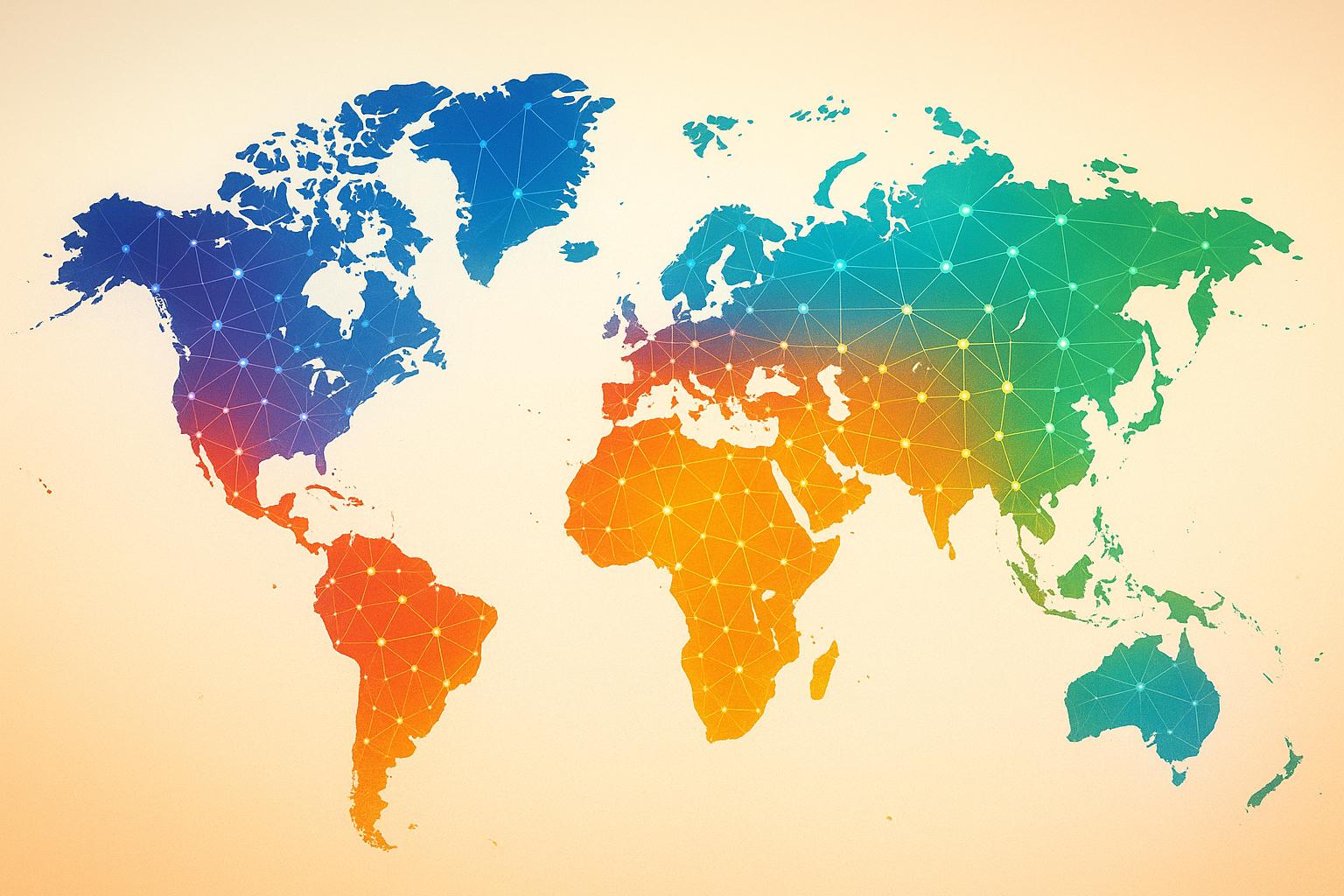


Learn how to effectively partner with developer influencers to enhance event visibility, boost registrations, and engage niche communities.
Partnering with developer influencers can help you connect with the right audience for your event. Developers trust peers who share genuine insights, making influencers an effective way to promote events, boost registrations, and engage niche communities. Here's the key to success:
- Why it Works: Developers value recommendations from trusted peers over ads. Influencers have loyal, targeted audiences and can amplify your event’s visibility.
- Finding the Right Influencers: Look for audience alignment, engagement quality, and technical credibility. Platforms like Twitter, GitHub, and Reddit can help identify potential partners.
- Micro vs. Macro Influencers: Micro influencers (1K-10K followers) often have higher engagement and niche expertise, while macro influencers (100K+ followers) offer broader reach. Combine both for balance.
- Outreach Tips: Personalize your message, highlight mutual benefits, and outline clear deliverables.
- Content Strategy: Use pre-event teasers, live updates, and post-event recaps to sustain interest. Leverage daily.dev Ads to extend reach.
- Measure Success: Track event registrations, engagement, and cost per acquisition to evaluate ROI and refine future campaigns.
Influencer Marketing & the Effective Use of Dev Evangelists | Draft.dev Monthly Webinar Series
Finding the Right Developer Influencers
Now that we’ve explored the benefits of working with influencers, let’s dig into how to identify the right developer voices for your event. Success isn’t about chasing big follower numbers or viral fame - it’s about finding influencers whose audience aligns with your event’s focus. The goal is to connect with the developer communities that matter most to you.
What to Look for When Choosing Influencers
Start with audience alignment. An influencer with 50,000 followers might seem appealing, but if their audience is primarily frontend developers and your event focuses on DevOps, the partnership won’t deliver the results you need. Look for influencers whose content naturally appeals to developers working with the technologies your event highlights.
Next, consider engagement quality over quantity. A smaller influencer with 5,000 engaged followers - people who comment, ask questions, and share posts - can often outperform someone with 25,000 passive followers. Check their comment sections for active discussions and meaningful interactions.
Authenticity is non-negotiable in the developer space. Developers are quick to spot content that feels forced or overly promotional. Seek out influencers who share honest experiences, including both wins and challenges, with tools and technologies. Their content should feel like advice from a trusted peer, not a marketing pitch.
Lastly, ensure technical credibility. The influencer doesn’t need to be a world-renowned expert, but they should clearly understand the technologies they discuss. Look for content that provides thoughtful insights and demonstrates a solid grasp of the subject matter.
Once you’ve outlined these criteria, it’s time to start your search.
Tools and Methods for Finding Influencers
Here are some effective ways to discover the right voices:
- Platform-specific searches: Use Twitter’s advanced search to find developers tweeting about your event’s focus areas. Look for those who consistently get replies and retweets from other developers. On GitHub, check for developers maintaining popular repositories related to your event’s theme - they often hold influence within their technical communities.
- Conference speaker lists: Review speaker rosters from past developer conferences in your niche. These individuals often have established audiences and experience creating content that resonates with technical communities. Check their social media activity to gauge their engagement and content style.
- Developer forums and communities: Platforms like Stack Overflow, Reddit programming subreddits, and specialized forums are goldmines for finding influential voices. Look for contributors who consistently provide helpful answers, spark meaningful discussions, and earn respect from their peers.
- Content analysis: Go beyond follower counts and likes. Dive into an influencer’s recent posts to understand their engagement patterns, the topics that spark the most interest, and how they interact with their audience. This can give you a clearer picture of how they might promote your event and the kind of response you can expect.
Micro vs. Macro Influencers: Which to Choose?
The choice between micro and macro influencers depends on your event’s goals, budget, and the size of your target audience. Each has its strengths, and the right pick can make a big difference in your campaign’s success. Here’s a quick breakdown:
| Factor | Micro Influencers (1K-10K followers) | Macro Influencers (100K+ followers) |
|---|---|---|
| Engagement Rate | 5-8% average engagement | 1-3% average engagement |
| Cost per Post | $100-$500 | $2,000-$10,000+ |
| Audience Trust | Closer connection | Broader but less personal |
| Niche Expertise | Deep specialization | Broader technical coverage |
| Content Flexibility | More willing to collaborate | Often have set content formats |
| Response Time | Usually faster communication | May involve managers or agencies |
Micro influencers are ideal if your event targets specific technologies or niche developer groups. Their audiences are often more engaged and trusting, which can lead to better conversion rates. Plus, they’re more likely to genuinely attend your event and share authentic content about it.
On the other hand, macro influencers are great for larger events or conferences that aim to reach a broader developer audience. While their engagement rates may be lower, their extensive reach can drive significant awareness and lend credibility to your event.
For the best results, consider combining both approaches. Partner with a few macro influencers to build overall awareness, while working with a larger group of micro influencers to target specific communities. For example, you might collaborate with two or three macro influencers to generate buzz, then team up with eight to ten micro influencers to engage niche audiences. This strategy balances reach, engagement, and cost.
Finally, keep your event’s size in mind. If you’re hosting a 200-person meetup, a macro influencer’s reach might generate more interest than you can handle. In this case, micro influencers can help you attract a more manageable, highly interested audience.
How to Reach Out and Negotiate with Influencers
Once you’ve carefully chosen the right influencers for your event, the next step is reaching out in a way that feels genuine and professional. Developer influencers often receive a flood of collaboration requests, so your approach needs to stand out while being respectful and authentic. This initial communication lays the groundwork for a productive partnership.
Writing Personalized Outreach Messages
Your first message is crucial - it sets the tone for the entire relationship. Avoid generic templates that can easily be dismissed. Instead, craft a short, personalized message that shows you’ve done your homework.
Start by referencing a specific piece of their work. For instance, you could mention how their blog post on Kubernetes deployment helped solve a challenge at your company or highlight a recent talk they gave at a conference. This shows genuine interest and builds rapport.
Keep your message concise but informative. Within a few sentences, make sure to cover:
- Who you are: Share your name and role.
- What your event is about: Provide a brief overview.
- Why they’re a great fit: Explain why you’re reaching out to them specifically.
- Your request: Clearly outline what you’re asking for.
Here’s a suggested structure for your email:
- Subject line: Use something clear and specific, like "Collaboration Opportunity for [Event Name] – [Technology Focus]."
- Opening: Compliment their recent work and explain what caught your attention.
- Event details: Include key information such as the event date, format (virtual or in-person), target audience, and expected attendance.
- The ask: Specify whether you’re requesting social media posts, a video, a blog review, or event participation. Include timelines and deliverables.
- Value proposition: Highlight what’s in it for them - this could be networking opportunities, early access to tools, or exposure to a relevant audience.
Once you’ve sent a tailored message, be ready to discuss terms and expectations.
Important Points to Negotiate
After making contact, it’s time to agree on terms that work for both sides. Clear communication about expectations, deliverables, and compensation is key to a successful collaboration.
Here are the main points to address during negotiations:
- Compensation: Decide whether payment will be a flat fee or non-monetary benefits like event access or networking opportunities. Make sure the offer matches their expertise and the scope of work.
- Deliverables: Be specific. For example, instead of simply asking for “social media promotion,” outline the number of posts, platforms, deadlines, and any required hashtags or mentions. For blog posts or videos, discuss word count, production timelines, and whether you’ll need to approve the content before it goes live.
- Timeline: Allow enough time for them to deliver quality work. Avoid rushing them with tight deadlines.
- Usage Rights: Clarify how you plan to use their content - whether it’s for your social media, marketing materials, or case studies.
- Performance Metrics: Set realistic goals. For example, instead of vague terms like “increased awareness,” aim for measurable outcomes like engagement rates or event sign-ups.
- Event Participation: If you’re inviting them to attend, specify what costs (e.g., travel, accommodation) you’ll cover and what they’ll need to handle on their own.
Once everything is agreed upon, choose the most effective way to stay in touch.
Best Ways to Contact Influencers
Picking the right communication channel can make or break your outreach efforts. Here’s how to approach it:
- Email is Best: Email is the most professional and effective way to send detailed proposals. Most influencers list a business email on their profiles or websites.
- Avoid Informal DMs: Direct messages on social platforms are fine for casual interactions but not for formal proposals.
- Find Contact Info: Check YouTube’s “About” section, GitHub profiles, or LinkedIn pages for business emails. If none are available, use a contact form on their website.
- Engage First: Before reaching out, interact with their content - comment on posts or share their work. This shows genuine interest.
- Follow-Up Strategy: If they don’t respond, wait about a week before sending a polite follow-up. Add value by including an update about your event. If there’s still no reply after a couple of follow-ups, move on to other prospects.
- Timing Matters: Avoid reaching out during busy periods, like major industry events or holidays, when they’re likely to be swamped.
Throughout your communication, keep it professional and focus on building a partnership that benefits both sides.
sbb-itb-e54ba74
Working Together to Create Content
Once influencer agreements are in place, it’s time to focus on creating content that boosts event registrations and keeps the buzz alive. Start by laying out a timeline that spans from the event announcement all the way to post-event follow-ups. Well-thought-out content not only amplifies influencer messages but also strengthens the event’s overall impact. These strategies help build excitement in the lead-up to your event.
Content Ideas Before Your Event
Pre-event content plays a key role in driving registrations and spreading awareness. To give influencers enough time to craft their material, start the planning process several weeks in advance. Here are some ideas to get you started:
- Speaker Spotlights: Highlight keynote speakers by showcasing their expertise and teasing key insights from their sessions. Focusing on technical topics or tools can spark interest and curiosity.
- Behind-the-Scenes Content: Share glimpses of event preparations, like venue setups, tech demos, or interviews with the organizers. This kind of content adds a personal touch and generates excitement.
- Educational Teasers: Offer short tutorials or tips that preview event topics. For example, if your event covers cloud architecture, influencers could share practical insights to both educate and promote the event.
- Countdown Posts: Regular updates that count down to the event, remind audiences of registration deadlines, and highlight session details can drive action.
- Technical Previews: Share sneak peeks of new features, APIs, or frameworks that will be showcased at the event. This is a great way to engage developer audiences and build anticipation.
As the event approaches, gradually shift your focus toward live coverage and post-event content to keep the momentum going.
During and After Event Content
Live coverage brings your event to a wider audience, including those who can’t attend in person. Encourage influencers to share real-time updates, capture key moments, and post quick reactions to keep the energy alive.
- Live Updates: Platforms like Twitter and LinkedIn are perfect for sharing real-time reactions during keynotes or sessions, extending the conversation to a broader audience.
- Story Coverage: Casual Instagram or LinkedIn Stories are a great way to authentically capture the event’s vibe without feeling overly promotional.
- Post-Event Recaps: Summarize key takeaways and practical insights in recap posts. These extend the event’s impact and keep the conversation going.
- Follow-Up Tutorials: If a speaker introduces a new tool or technique, having influencers create follow-up tutorials can provide ongoing value and encourage further engagement.
- Thank You Posts: Acknowledging speakers, organizers, and attendees in thank-you posts helps nurture relationships and keeps the community connected.
Different Content Types and Their Results
Choosing the right content format is essential for meeting your campaign goals. Each type serves a different purpose, so mix and match based on your objectives:
- Video Content: High-impact demos, interviews, and event recaps work well in video format, particularly when they include live coding or technical walkthroughs.
- Blog Posts: In-depth technical articles or detailed event summaries provide long-term value and boost SEO, though they require more time to produce.
- Social Media Posts: Quick updates, behind-the-scenes peeks, and announcements are easy to create and drive strong engagement.
- Live Streaming: Real-time streams, such as Q&A sessions or keynote broadcasts, encourage immediate interaction but require careful planning and a reliable setup.
- Podcast Appearances: Podcasts offer a platform for deeper discussions and thought leadership, creating another valuable way to connect with your audience.
To amplify your content’s reach, consider using daily.dev Ads to promote high-performing pieces to a larger audience.
Tracking Results and Improving Future Campaigns
After laying the groundwork with solid content strategies, tracking metrics becomes essential for refining your influencer campaigns. Without proper tracking, you risk missing opportunities to fine-tune your efforts. Focus on metrics like event registrations, brand awareness, and community engagement to measure success.
Important Metrics to Track Campaign Success
Before launching your campaign, establish baseline metrics to understand your starting point. This helps you measure the real impact of your influencer collaborations. Registration conversions should be a top priority - track how many people sign up for your event using each influencer's unique links or promo codes.
When targeting developers, prioritize quality engagement over sheer numbers. Look for meaningful interactions, like technical discussions, implementation questions, or requests for additional resources. These indicators often align with higher registration conversions and show genuine interest from your audience.
Brand mention sentiment is another key metric. Use social listening tools to monitor conversations about your event on platforms like Twitter, LinkedIn, Reddit, and developer forums. Pay close attention to feedback on your event content or speakers, as well as technical discussions sparked by your campaign.
Cost per acquisition (CPA) is crucial for evaluating the financial efficiency of each partnership. Divide the total influencer investment (fees, content creation, promotion) by the number of registrations or attendees generated to get a clear picture of your ROI.
Using daily.dev Ads for Campaign Analytics

daily.dev Ads offers powerful analytics to complement your influencer tracking. Its real-time performance tracking provides insights into how your promoted content resonates within the developer community, often revealing trends that traditional social media analytics overlook.
The platform helps you measure precision targeting effectiveness, showing how your ads perform across different developer segments. Whether you're reaching junior developers exploring new frameworks or senior architects evaluating enterprise tools, this data highlights which audience groups respond best to influencer content versus direct ads.
Native ad performance metrics from daily.dev can reveal how well influencer-created content performs when amplified through paid promotion. For example, in-feed ads featuring influencer testimonials or event previews often yield different results than standard promotional content, offering valuable insights for refining your strategy.
With global reach analytics, you can identify geographic trends in your campaign's performance. If your event resonates particularly well in certain regions, you can focus future efforts on influencers with strong followings in those areas.
Technology-specific targeting data helps pinpoint which programming languages, tools, or frameworks drive the most engagement with your event content. This information allows you to adjust your speaker lineup or session topics to better align with developer interests, seamlessly informing your next campaign.
Improving Future Influencer Partnerships
Use the detailed data from your campaigns to improve future influencer collaborations and boost event attendance. When selecting partners, rely on performance metrics to identify which influencers drive the most valuable engagement and conversions.
Develop influencer scorecards that go beyond follower counts. Include data like average engagement rates, conversion performance, content quality, and audience alignment with your goals. This systematic approach ensures you make informed decisions about renewing partnerships and allocating budgets.
Analyze which content formats work best. For instance, if video demos consistently outperform written posts, shift your content briefs and budgets accordingly. Similarly, if behind-the-scenes content generates more authentic engagement than polished promotional posts, incorporate more casual content into your campaigns.
Consider posting times and CPA when planning schedules and budgets. Some developer communities are more active during specific times of day or days of the week, and adjusting your strategy to match these patterns can improve results.
Building long-term relationships with influencers also pays off. Track performance across multiple campaigns to identify top-performing partners. Reward these influencers with priority access to new opportunities, exclusive content, or enhanced compensation packages. This approach helps you create a reliable network of advocates who genuinely connect with your audience.
Finally, refine your ideal influencer profile using campaign data. Focus on traits like technical expertise, audience engagement quality, content creation skills, and alignment with your brand's values. By integrating post-campaign insights into your influencer selection process, you can strengthen the authenticity and trust that are key to engaging developers effectively.
Building Long-Term Partnerships with Developer Influencers
Shifting from one-off collaborations to long-term partnerships with developer influencers can transform your approach to event marketing. These partnerships build trust, create more genuine content, and deliver a stronger return on investment.
According to industry data, campaigns with long-term influencer relationships see a 30% improvement in effectiveness. Why? Because when influencers truly understand your brand and events, their endorsements feel more genuine, resonating better with their audiences.
One key advantage of these partnerships is consistent messaging. When influencers repeatedly promote your events, their audiences begin to associate your brand with reliability and value. This familiarity can lead to higher registration rates and deeper engagement across multiple events. However, maintaining this recognition requires ongoing effort and interaction.
To keep these relationships strong, stay in touch with your top influencers between events. Share updates about your company, involve them in discussions about future event topics, and give them early access to new features or speakers. These small but meaningful touchpoints help your brand stay top of mind and reinforce the importance of their role.
Another essential factor is giving influencers creative freedom. Overly strict content guidelines can stifle their enthusiasm and make their endorsements feel forced. Instead, set clear goals and let them create content that feels natural to their audience. This balance ensures their authenticity aligns with your marketing objectives.
Consider evolving these partnerships into ambassador-style relationships. Ambassadors receive additional perks like higher compensation, priority speaking slots, and greater involvement in event planning. This deeper engagement strengthens their connection to your brand and enhances their advocacy.
Platforms like daily.dev Ads can amplify the reach of these partnerships. By extending influencer-generated content to over 1 million developers worldwide, you create multiple touchpoints for your message. With precise targeting based on programming languages and experience levels, you can ensure this content reaches the right audience segments.
It’s also important to measure the health of these relationships alongside your campaign metrics. Track how influencer engagement rates and content quality evolve over time. Are their audiences responding positively as they grow more familiar with your brand? Use these insights to refine your strategy.
Sometimes, the impact of a smaller, highly engaged audience can outweigh that of a larger but less active one. Ten thousand engaged followers can be far more valuable than 100,000 passive ones. Focus your efforts on influencers who consistently connect meaningfully with their communities. Over time, these relationships grow in value as the influencer’s credibility and their audience’s trust in your brand deepen.
In the developer world, authenticity is everything. Long-term partnerships allow influencers to share honest, personal experiences with your events, fostering trust-based recommendations. This trust not only boosts attendance but also builds lasting connections within the developer community.
FAQs
How can I tell if a developer influencer's audience is a good fit for my event?
To figure out if an influencer’s audience fits your event, start by looking into their followers’ demographics, interests, and how they engage with content. Take a close look at the influencer’s previous posts and partnerships to ensure their style and focus align with your event’s theme and target audience. You can also use market research to confirm that their community connects with your event’s objectives.
What are the best ways to negotiate fair compensation and clear deliverables with developer influencers?
To successfully negotiate with developer influencers, begin by understanding their usual rates and the unique value they can add to your event. Be clear about the scope of work - this includes specifying the number of posts, the style of content, required hashtags, tagging expectations, and deadlines. Establishing a reasonable budget from the start and aiming for an agreement that benefits both parties can build trust and set the stage for a smooth partnership. Maintaining open, professional communication throughout the process is key to fostering a strong and positive working relationship.
How can I track the success of working with developer influencers to boost event registrations and engagement?
To gauge how well your collaboration with developer influencers is working, keep an eye on metrics that clearly connect their efforts to your event's results. One effective way to do this is by using unique referral links or promo codes. These tools allow you to track exactly how many registrations each influencer generates, giving you a clear view of their direct impact on attendance.
You should also pay attention to engagement metrics like social media shares, comments, likes, and click-through rates on the content they create to promote your event. By comparing registration numbers and engagement levels before and after your partnership, and leveraging analytics tools, you’ll get a solid understanding of how much their involvement is driving your event’s success.
Focusing on these tangible results makes it easier to see how well the partnership is contributing to your goals.






